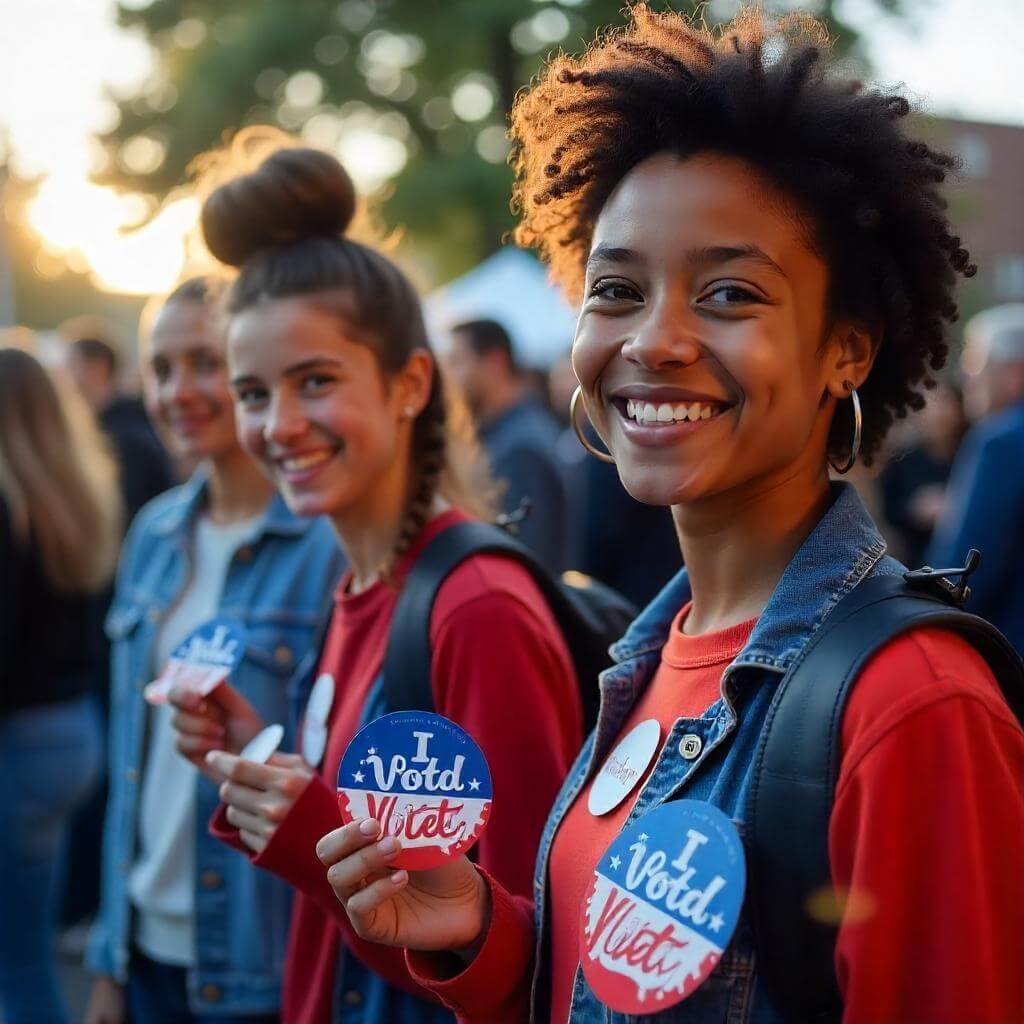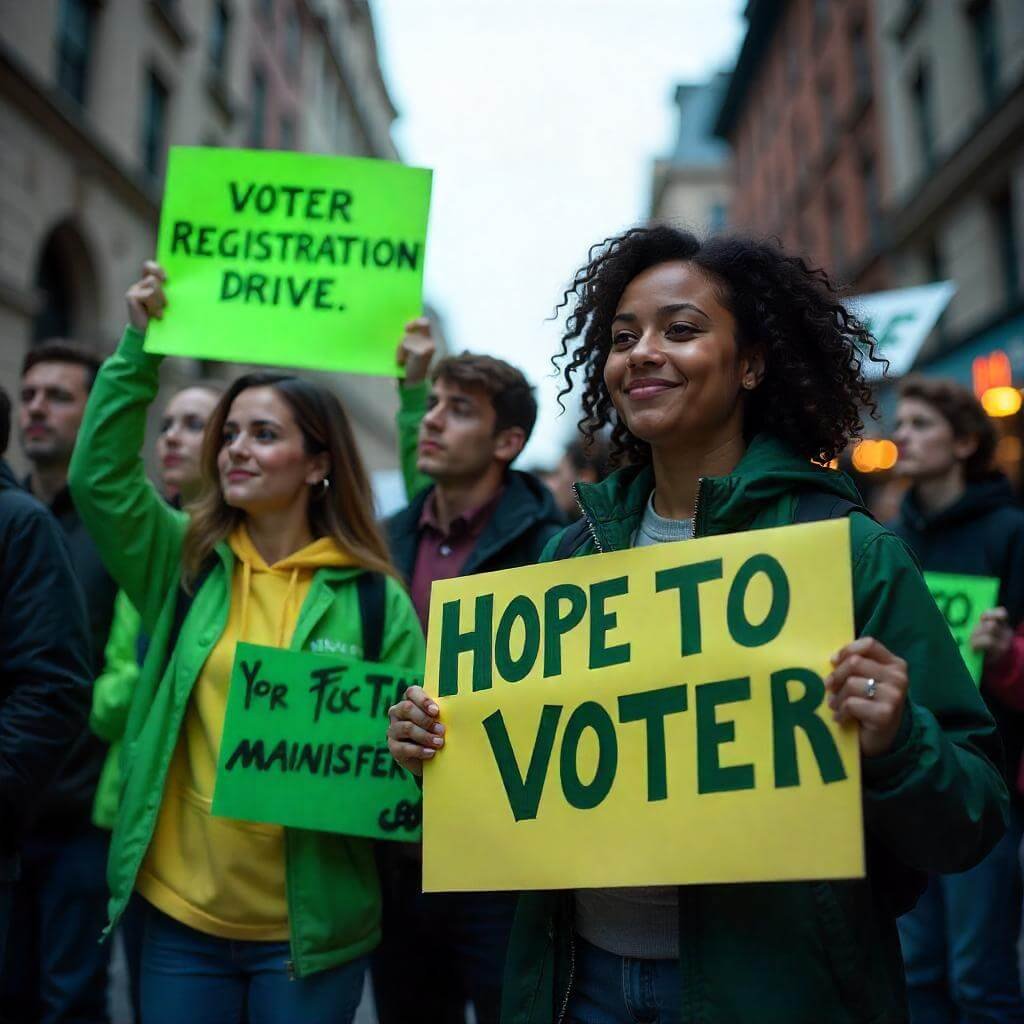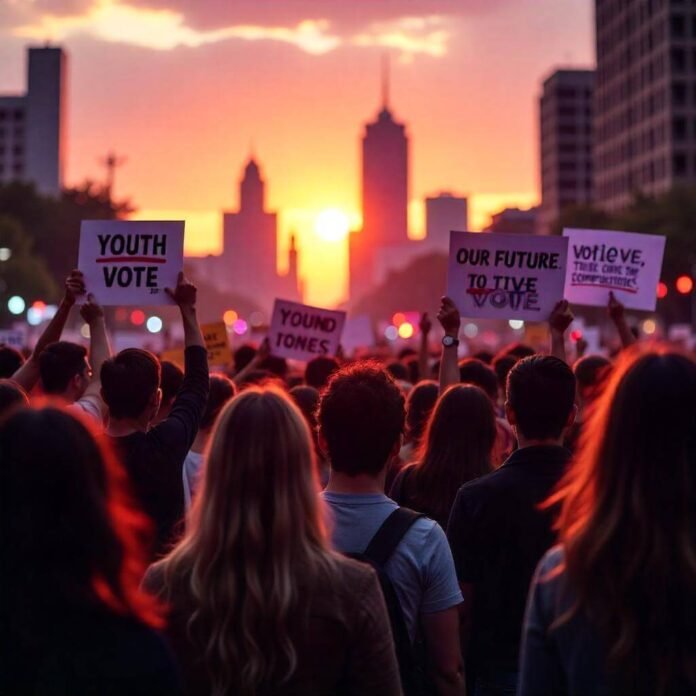Youth political engagement is transforming the political landscape, and, consequently, it could be the deciding factor in the 2025 election. Young voters, particularly Gen Z and Millennials, are increasingly active, vocal, and organized. Moreover, with their strong presence on social media, commitment to social justice, and rising voter turnout, they hold significant power to influence election outcomes. This blog explores how youth political engagement could tip the scales in 2025, supported by data, real-world examples, and actionable insights.
Why Youth Political Engagement Matters in 2025
Youth political engagement is no longer a footnote in elections—it’s a game-changer. In the 2020 U.S. presidential election, 65% of voters aged 18-24 turned out, a significant jump from 48% in 2016, according to CIRCLE at Tufts University. This trend is expected to continue, with young voters projected to make up 20% of the electorate in 2025. Their priorities—climate change, racial justice, and economic equity—are driving policy conversations and influencing candidates.
Young voters are also digitally savvy, using platforms like TikTok and Instagram to amplify their voices. For example, Gen Z activists like Greta Thunberg have mobilized millions globally, proving that youth political engagement transcends borders.

How Young Voters Are Shaping the 2025 Election
Increased Voter Turnout
Youth political engagement is driving unprecedented voter turnout. In 2020, young voters in swing states like Michigan and Pennsylvania were pivotal in tight races. Organizations like Rock the Vote are making registration and voting more accessible, targeting college campuses and online communities.
- Key Stat: 53% of 18-29-year-olds voted in 2020, compared to 46% in 2016 (U.S. Census Bureau).
- Takeaway: Campaigns targeting young voters with clear, relatable messages will likely see higher turnout.

Social Media as a Political Tool
Social media is the heartbeat of youth political engagement. Platforms like X and TikTok allow young voters to share information, organize rallies, and call out misinformation. In 2024, X posts from young activists about climate policies garnered millions of views, shaping public opinion.
- Example: The #VoteForClimate campaign on TikTok, led by Gen Z creators, reached over 10 million users in 2024, encouraging young voters to prioritize environmental policies.
- Actionable Tip: Political campaigns should partner with influencers to reach young audiences authentically.
Focus on Key Issues
Young voters are issue-driven, prioritizing topics like:
- Climate Change: 68% of Gen Z voters say climate is a top issue (Pew Research Center).
- Social Justice: Movements like Black Lives Matter have energized young voters to demand systemic change.
- Economic Opportunity: Student debt and job security are major concerns for Millennials and Gen Z.
Candidates who align with these priorities and communicate transparently will resonate with young voters.
Challenges to Youth Political Engagement
Despite their enthusiasm, young voters face obstacles that could hinder their impact in the 2025 election.
Voter Suppression Tactics
Strict voter ID laws, limited polling locations, and misinformation campaigns disproportionately affect young voters. In 2020, 1 in 10 young voters reported difficulties voting due to these barriers (CIRCLE).
- Solution: Support organizations like Fair Fight that combat voter suppression.
Political Apathy
Some young people feel disconnected from politics, believing their vote won’t make a difference. This apathy stems from distrust in institutions and lack of civic education.
- Solution: Schools and communities should prioritize civic engagement programs to empower young voters.

How to Amplify Youth Political Engagement
To maximize the impact of youth political engagement in 2025, here are actionable strategies for voters, campaigns, and organizations:
- Leverage Social Media: Create shareable, engaging content on platforms like X and TikTok to reach young audiences.
- Simplify Voting Access: Provide clear guides on voter registration, mail-in voting, and polling locations.
- Engage on Issues: Address youth priorities like climate change and economic equity with concrete policy proposals.
- Build Trust: Be transparent and authentic to counter political apathy.
Example: In 2024, a Michigan campaign used Instagram Reels to explain voting processes, resulting in a 15% increase in youth voter registration in the state.
The Future of Youth Political Engagement
Youth political engagement is not a trend—it’s a movement. As Gen Z and Millennials continue to grow as a voting bloc, their influence will only increase. The 2025 election could be a turning point, with young voters tipping the scales in favor of candidates who prioritize their concerns.
By addressing barriers, leveraging digital tools, and focusing on key issues, we can ensure that young voters remain a powerful force in shaping democracy.
Call to Action: Are you a young voter? Register to vote today at Vote.gov and make your voice heard in 2025!

